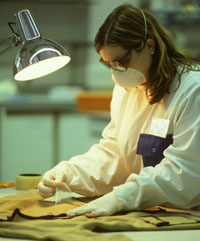
by blogger jgl
The Bring Your Own Slides session is often a highlight of the AAFS annual meeting. This year was no exception. The BYOS session is an opportunity for forensic scientists to share interesting stories from their work. There is always a mix of entertaining, light stories, along with more somber stories that are part of the profession (medical examiners are usually featured).
This session was hosted by Dr. Michael Baden of HBO's Autopsy. I think he usually hosts it. His talks are always good. Tonight he didn't have a feature, but threw in good comments throughout.
One of the top talks was by Sam Brothers, a computer forensics guy from US customs. He is a magician! I liked the card counting demonstration.
The feature of his talk focused on cell phone/GPS forensic work. iphones are unique for retaining voicemail in the phone... windows washer doesn't wash log files... a smashed (or chewed) sim card can still be analyzed... and your GPS knows where you are and where you've been. technology helps the good guys!
The always entertaining Mark Benecke (www.benecke.com) gave a "fun" talk on a german cannibal. He pointed out that cannibalism can be a tricky category when it comes to charging the crime. Homicide doesn't necessarily fit when a person volunteers to be killed and eaten by another person. Trust me, the details are even weirder than it sounds.
The real bones herself, Kathy Reichs stopped by and told a neat story about how research for one of her books helped lead to an answer in one of her cases. I'm not sure if i have the details right, but basically while researching a deceased Canadian who died in a Guatemalan civil war and a past leper community on Tracadie in New Brunswick, the local press (and possible accompanying documentary) led to someone coming forward admitting to raiding a graveyard when he was a 12-year-old kid. After a couple failed pranks, the bones were ditched in some woods. Years later, in 1989, the skull wound up in kathy reichs' hands and has remained unidentified. eh... i think i messed up the story... maybe it will be featured in an episode of bones.
other good talks as well. Did you know Dickens worked for a coroner? and wrote some articles for the Lancet?








